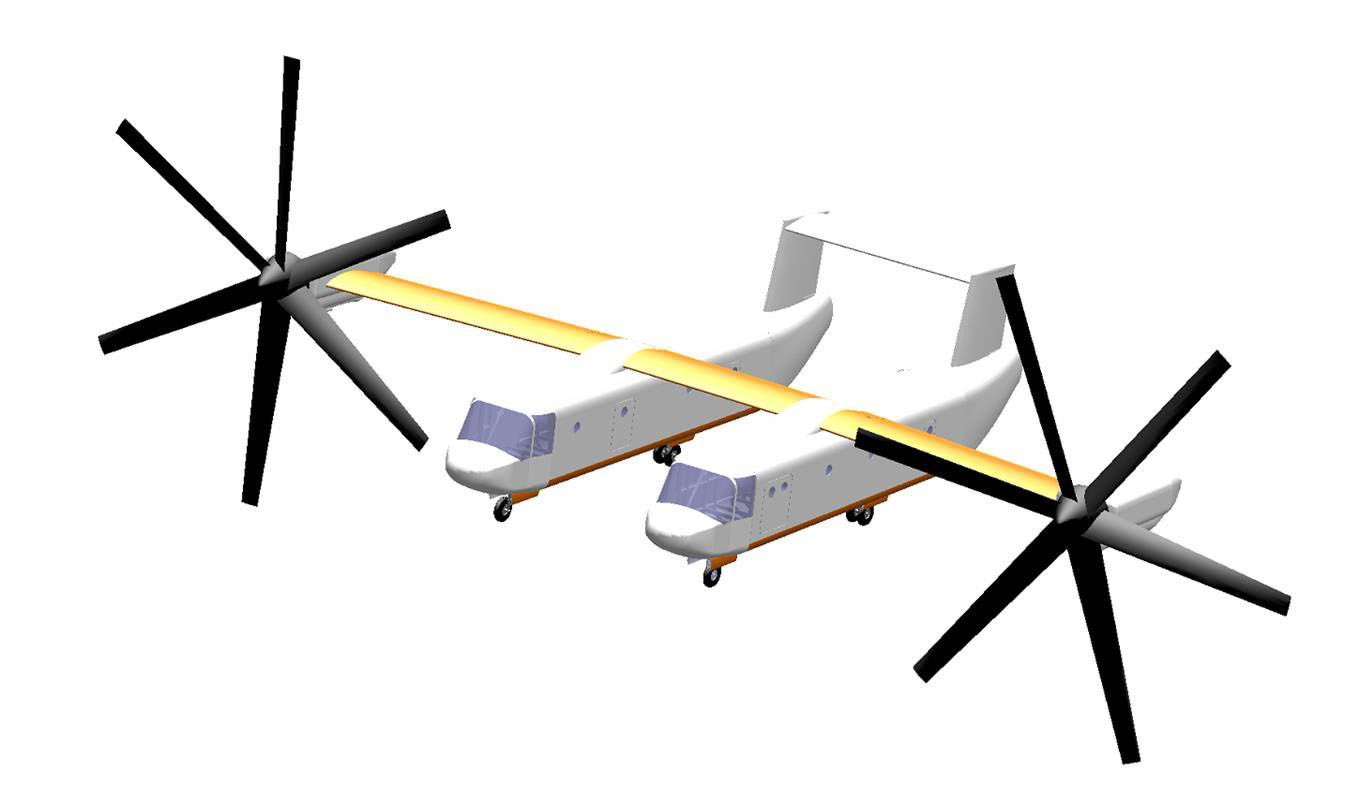University takes first place with flying rescue vehicle design for NASA contest

Ten Virginia Tech undergraduate aerospace engineering students took the top prize in a NASA aeronautics competition for college students to develop a multipurpose amphibious aircraft.
The engineering students were asked to design a civilian aircraft that could rescue up to 50 survivors in the event of a natural disaster. Their design appeared as a rotorcraft that resembled a catamaran.
“Our team had an innovative concept, and then they worked well together as a team to do the supporting engineering analysis demonstrating the technical justification for the design,” said William Mason, professor of aerospace and ocean engineering and advisor to the award-winning team.
Virginia Tech students have a strong history of winning NASA aircraft design competitions, also placing first in 2008, and winning the American Institute of Aeronautics and Astronautics student competition in 2009.
“We are rebuilding a dynasty at Virginia Tech,” said Stephen Pace, a Virginia Tech graduate who headed the 2008 team.
The vehicle had to be able to hover to help rescue missions, land on ground or water, travel 920 miles, and cruise at speeds up to 345 miles an hour, according to NASA’s competition rules. The amphibious tilt-rotor vehicle also had to be able to fight fires by siphoning water into an internal tank, then dumping it after airborne.
NASA's Aeronautics Mission Directorate in Washington sponsored the competition through the Subsonic Rotary Wing Project in its Fundamental Aeronautics Program.
More than 100 college students from the United States, India, the United Kingdom, Canada, Poland, China, and Nigeria entered the contest in teams or as individuals.
Susan Gorton, principal investigator of the Subsonic Rotary Wing Project, led the review panel. "The designs were creative, innovative, and looked at many issues in detail," she said. "Reading the student papers highlighted how many bright young engineers are interested in the future of rotary wing vehicles. I certainly hope some of them decide to work with NASA as a career choice."
A team of 10 graduate students from Georgia Tech in Atlanta and the University of Liverpool in England took second place, and 28 undergraduates from the University of Virginia in Charlottesville, Va., placed third.
According to NASA, it sponsored the design contest to interest students in aeronautics and engineering careers. Each winning U.S. team received a cash award and an engraved trophy through a NASA education grant and cooperative agreement. Cash awards ranged from $5,000 for first place to $3,000 for third place. Five of the students from the top U.S. teams also won paid summer internships at NASA.
The 10 Virginia Tech aerospace and ocean engineering seniors and their hometowns are: James Tenney, Clemson, S.C.; Jason Smith of Viewtown, Va.; Joseph Diner of Charlottesville, Va.; Ryan Berg of Stafford, Va.; Alexander Carra of East Hanover, N.J.; Bryant Tomlin of Sparta, N.J.; and Alan Steinert, Ryan Paetzell, Meagan Hom, and Michael Creaven, all of Blacksburg, Va.
The College of Engineering at Virginia Tech is internationally recognized for its excellence in 14 engineering disciplines and computer science. The college's 6,000 undergraduates benefit from an innovative curriculum that provides a "hands-on, minds-on" approach to engineering education, complementing classroom instruction with two unique design-and-build facilities and a strong Cooperative Education Program. With more than 50 research centers and numerous laboratories, the college offers its 2,000 graduate students opportunities in advanced fields of study such as biomedical engineering, state-of-the-art microelectronics, and nanotechnology. Virginia Tech, the most comprehensive university in Virginia, is dedicated to quality, innovation, and results to the commonwealth, the nation, and the worl




